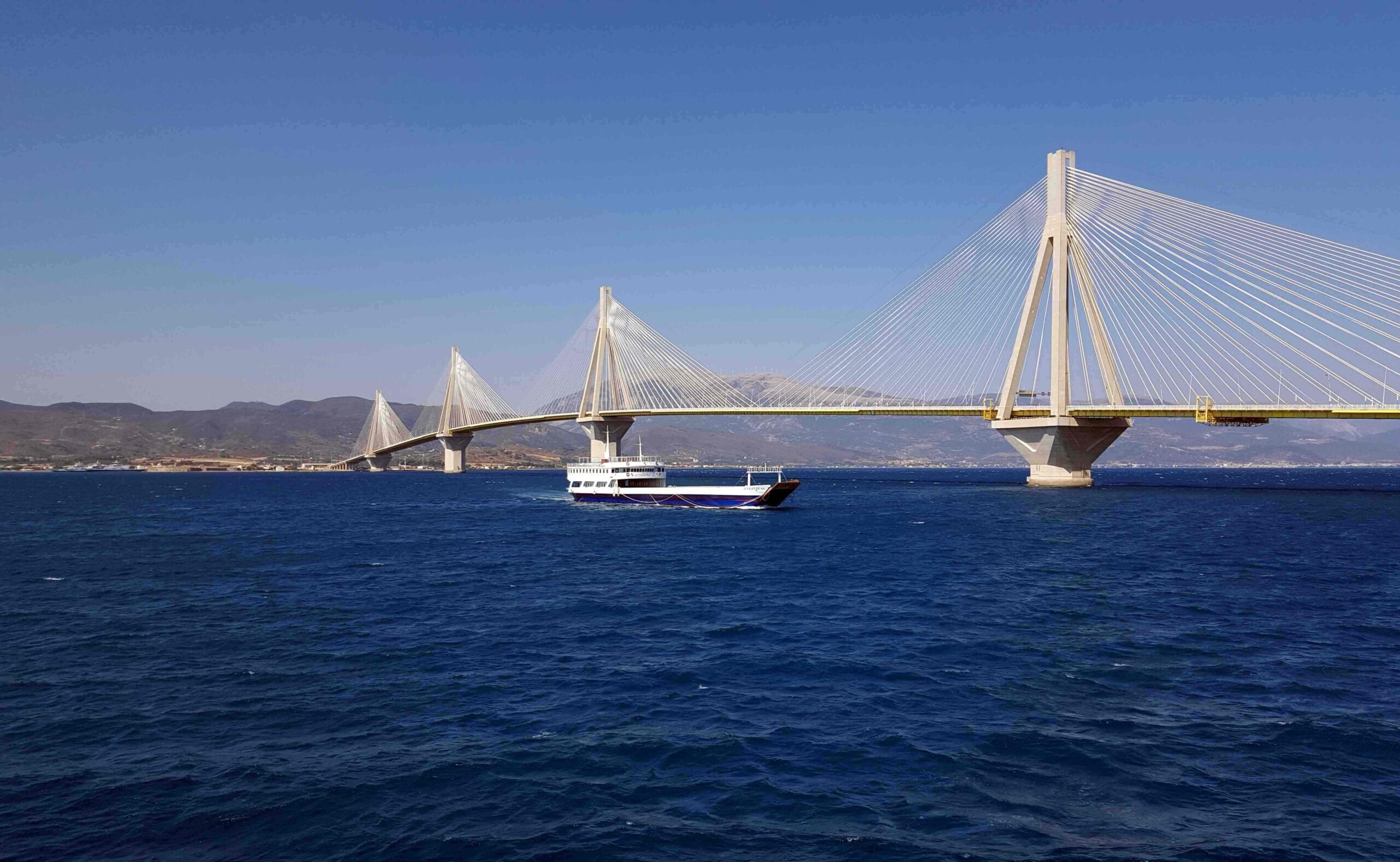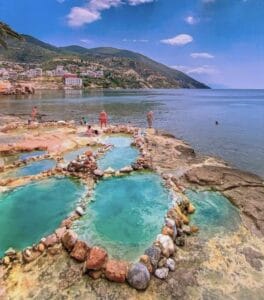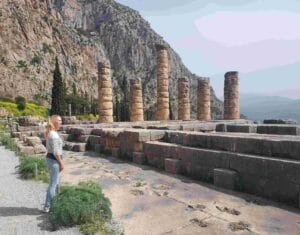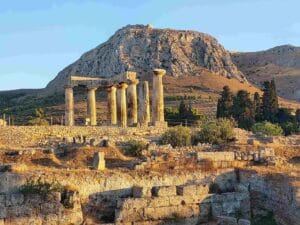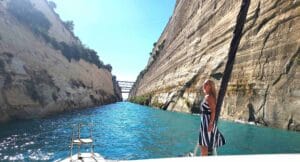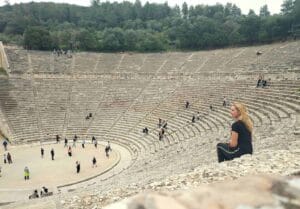After visiting the impressive complex of Delphi in the northern part of the Gulf of Corinth, we continued sailing westward toward Patras. This is the “exit” of the Gulf of Corinth, which then turns into the Gulf of Patras.

Southern shore of the Gulf of Corinth
The weather in Greece was still good, with both sunshine and wind, so the sails went up regularly. We chose the route along the southern shore of the Gulf of Corinth, because there were still beautiful and sheltered places to see along the way.

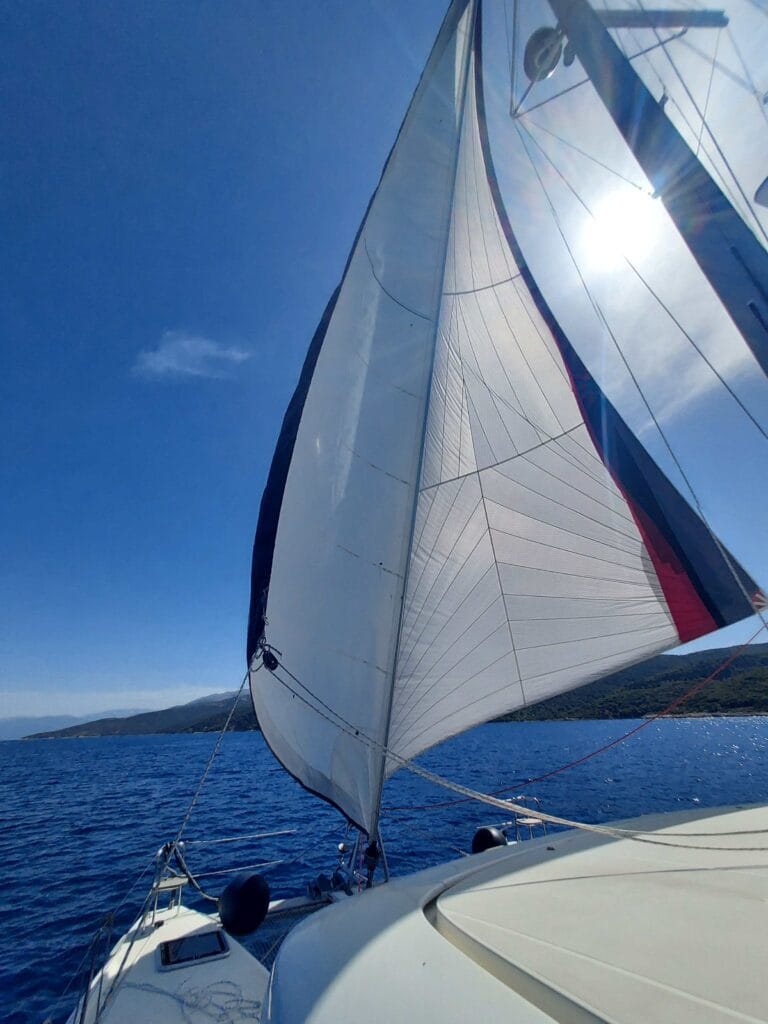
Apart from places such as Delphi, Corinth (city) or Galaxidi, there are not many big settlements along the Gulf of Corinth. Typically, you find small villages on the coast, each with a small harbour. Sometimes we shared the harbour with fishermen, who set off with their colourful boats late in the afternoon and then return in the dark at night. We always pay close attention to where we dock along the quay — if there are stacks of nets, it means that this spot belongs to a fisherman (who may return from his fishing trip). We remain amazed at how active and thriving the fishing industry still is here. This is of course partly due to the many tourists and restaurants, but we also regularly see people fishing along the shore as a hobby.
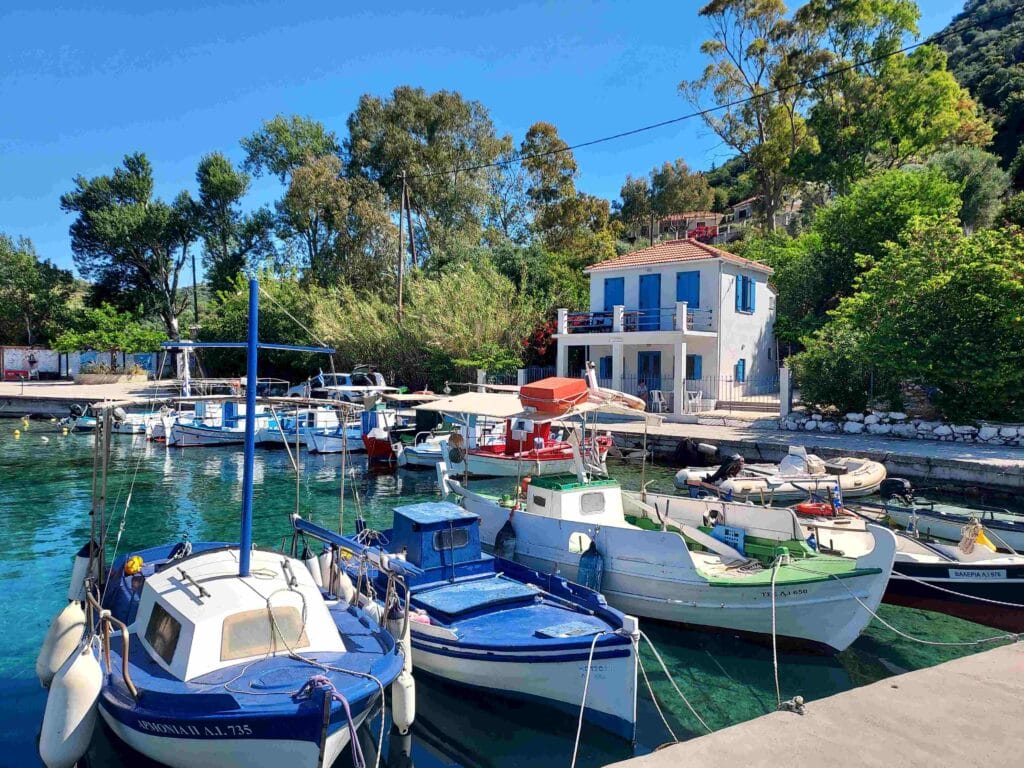

And we regularly allow ourselves to be tempted to eat out, especially when the chairs of a restaurant are invitingly set up on the beach with lights hanging above them. Then we happily leave our catamaran to see what delicious food they serve 😉. You can still sit outside reasonably well — with a light jacket — and out of the wind it’s perfectly comfortable.
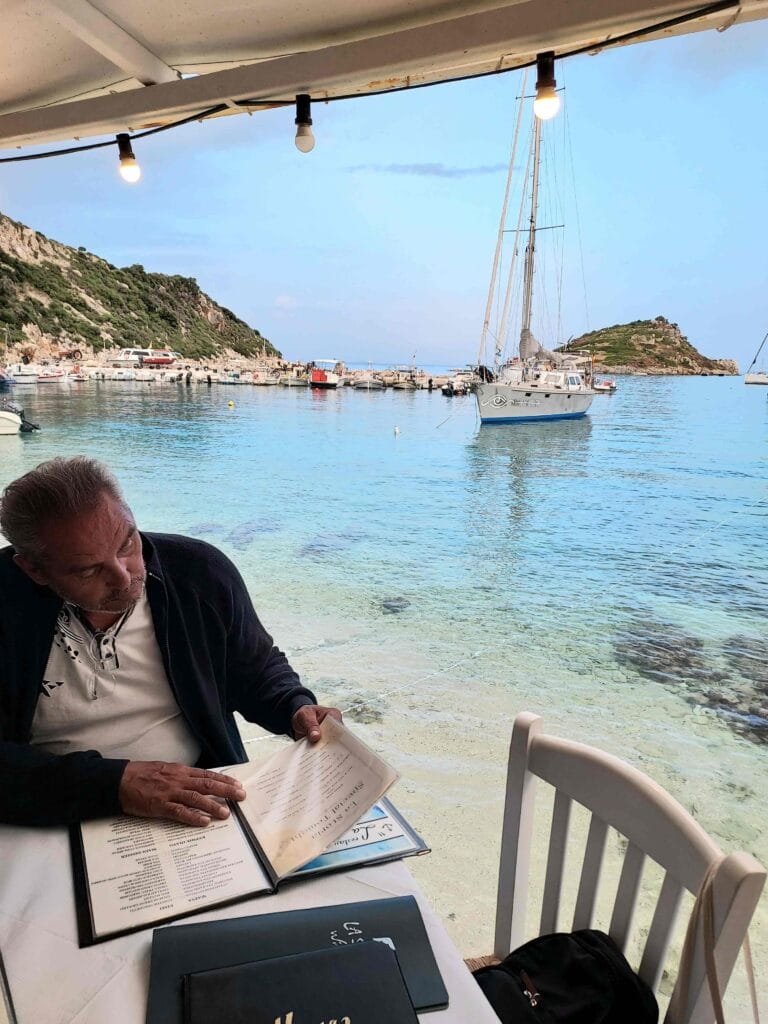
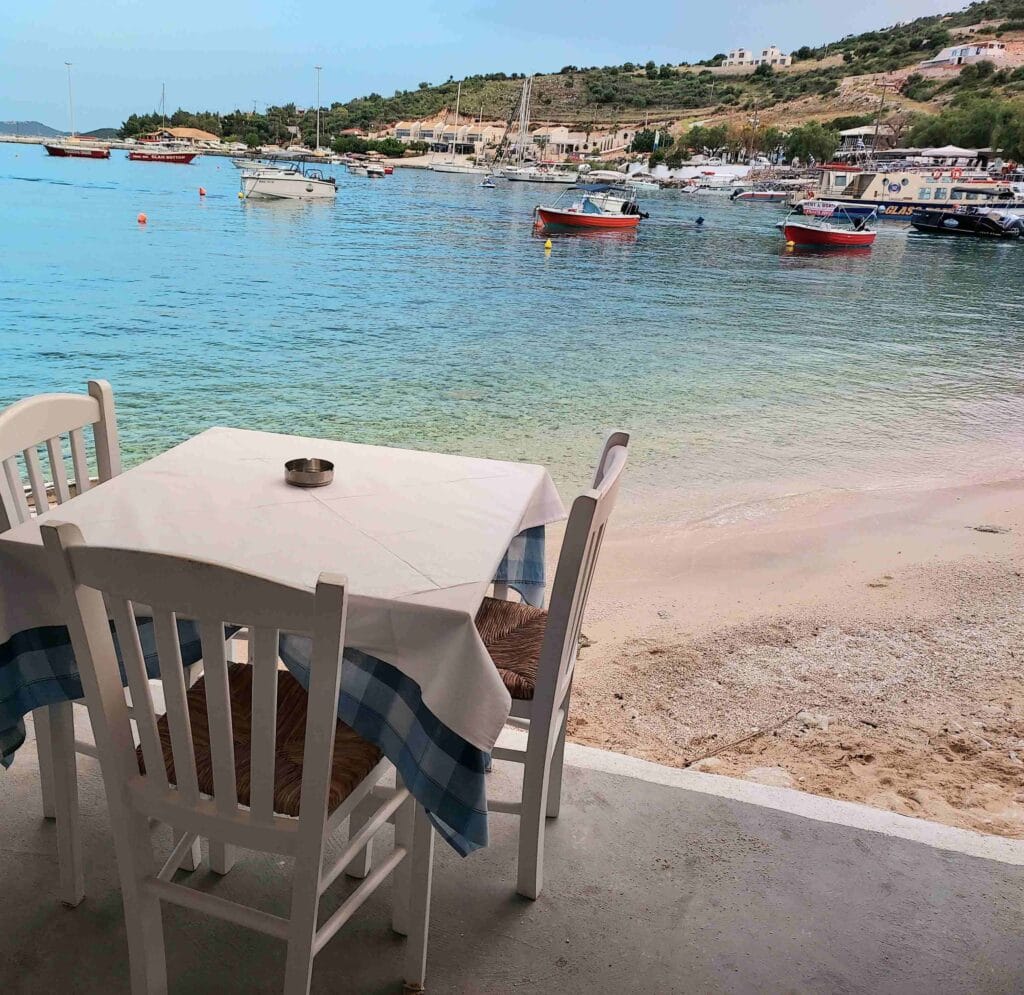
You can clearly notice that the tourist season has come to an end. It continues until late October. So now there is plenty of space in the harbours and restaurants. In the coastal villages, calm has returned as well. Not all restaurants and shops are open anymore, though there are still enough for the locals.
So all the hotel signs are essentially waiting for the new season again; from May/June onwards it gets busier. The ones that always remain are the cats. Greece is known for its large number of (stray) cats. You see them everywhere: in the villages, in the harbour, in restaurants. They simply sit next to your chair hoping to get something. They also regularly come aboard when you’re moored; don’t be surprised if you’re walking on your boat and suddenly a cat passes outside your window. It then gets startled and quickly jumps off the boat again!
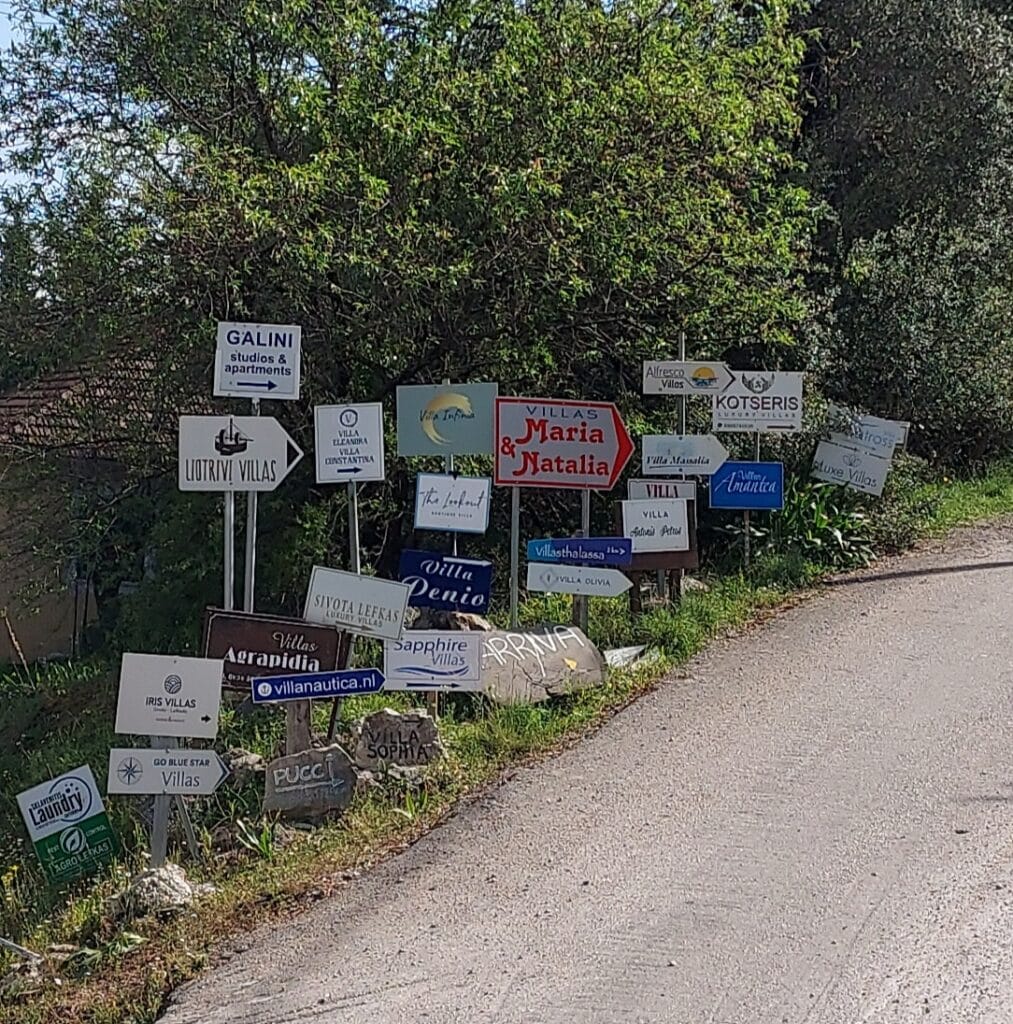
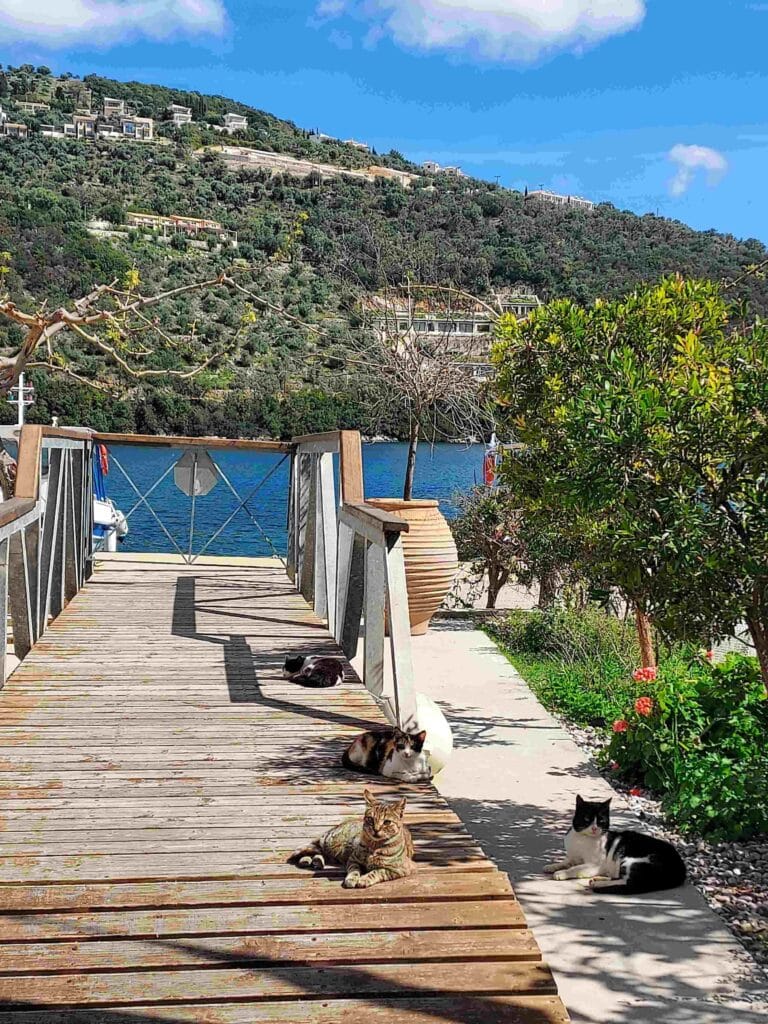
And because we are increasingly heading west, we also get beautiful sunsets, like here where we were “front row” with the boat next to a small bridge — perfect for watching the sunset.
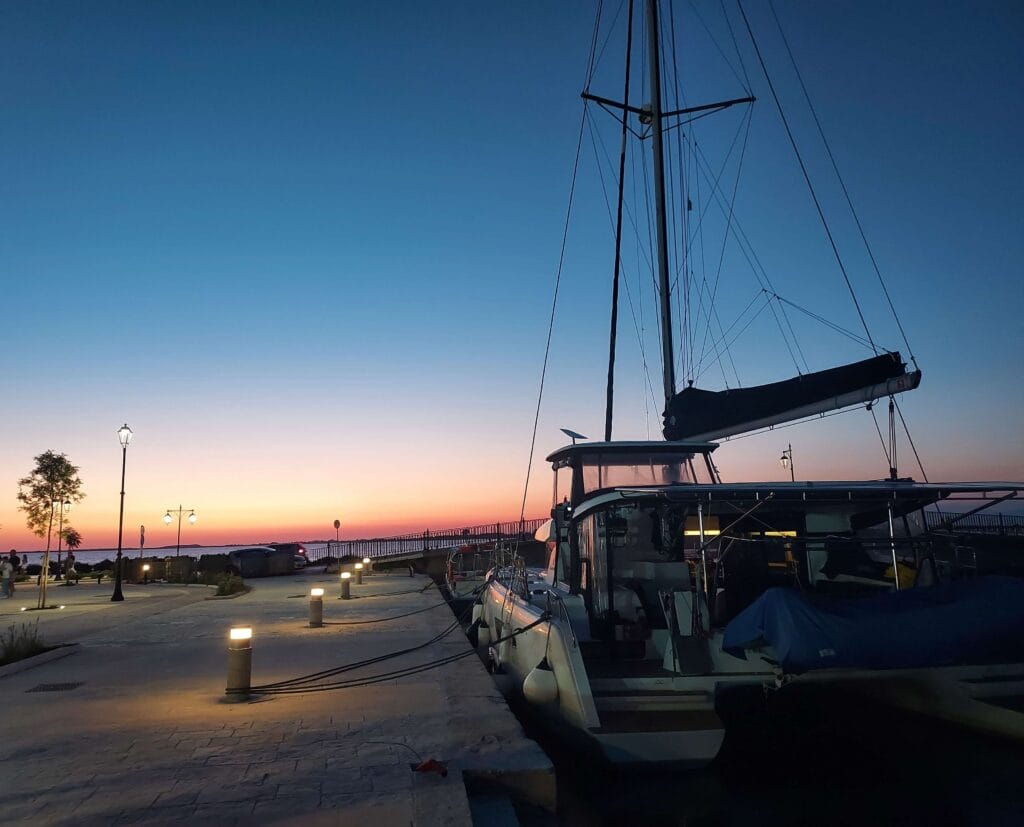

Rio–Antirrio Bridge
And the closer we came to the “exit” of the Gulf of Corinth on the west side, the more we saw the bridge near the city of Patras appear. It is the longest cable-stayed bridge in the world, about 2,880 metres long, connecting the Peloponnese peninsula with mainland Greece.
There were quite a few challenges in building the bridge, as the foundation had to be placed in deep water with a loose seabed, and there is seismic activity and tectonic movement in this area because the Gulf of Corinth is slowly expanding. The bridge was opened shortly before the 2004 Athens Olympic Games.
The vertical clearance under the bridge deck is approximately 52 metres in the widest central section. In the side sections (less central), the height is considerably lower, around 32 metres, and at the very edges about 15 metres.
I had researched the rules for shipping beforehand. Five miles before reaching the bridge, you must call “bridge control.” You give your boat name, length, mast height, and course. When you are one mile from the bridge, you must report again, and then you hear between which two pylons you must pass. The central channel is usually for large ships; yachts are often directed to a side channel. You must pass with sails down, under motor power, because there may be currents and wind effects. The surprising thing was that we were also told to keep listening to VHF channel 14 after we passed through, as additional instructions might follow (possibly to give way to approaching large ships?).
We sailed under the bridge, and even though you are passing under 32 metres, your 22-metre mast suddenly feels alarmingly close to the underside of the bridge. It is very deceiving when you look up from the deck as you can see in our 1 minute video!
And so we arrived at the city of Patras, the third-largest city in Greece. We could stay comfortably in the harbour, which offers a free quay for sailboats.
